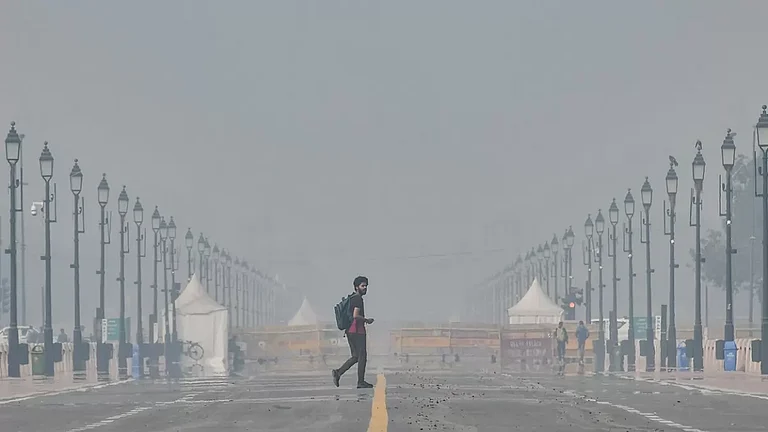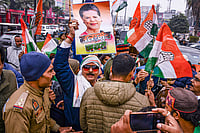In a country like India where a large mass of its population isn’t well-off, it’s not good news when a national report states that the rich and the educated are more likely to have contacted the police compared to the poor and the less literate. What’s more, a “divide” between the public and the police gains greater significance, given that a recent study states 71 per cent of the complainants contacted the police along with their family, friends, relatives or influential people. Overall, there is an urgent need to improve public confidence in the police—by behavioural changes in the personnel or by leveraging technology, or both.
The pioneering study by a leading NGO and a research institute reports class-based discrimination as being more likely followed by gender, caste and religion. The public fear of the police is higher among the country’s minorities such as the Muslims and Sikhs, while with the Hindus it is more among the Scheduled Castes (SCs) and Other Backward Classes (OBCs) compared to the rest of the castes.
Titled ‘Status of Policing in India Report 2018—A Study of Performance and Perceptions’, the pioneering study brought out on May 10, was conducted by Common Cause and the Centre for the Study of Developing Societies (CSDS). It focuses on people’s experience with the police, satisfaction with services, trust in the police, discrimination by police, and fear of police rather than focusing on the number of crimes, convictions, number of personnel, and infrastructural assets. These are factors that intimately impact each one of us in contrast with the distant impact of factors such as the number of cases registered by the police. The Common Cause-CSDS study is pioneering as it is based on empirical data obtained through field surveys, and focuses on outcomes of people’s experience with the police, than outputs of the functioning of the criminal justice system. The study differs from similar preceding endeavours which were efforts based on judgements, reports and policy papers authored by courts, legal experts, police officers, and administrators.
While underlining the inadequate quality of the public service, the study point out that the people are sympathetic and understanding: 78 per cent of the respondents who had contacted the police are “very satisfied” or “somewhat satisfied” with the police and only 16 per cent are “completely or somewhat dissatisfied”. On the whole, the study points to definitely smarter ways of understanding the challenges of the police that may contribute to smart policing.
The study reveals a clear variation across genders, classes and castes when it comes to police-public interactions: men and the upper classes report greater contact with the police compared to women and the poor. One-fourth of the people who approached the police could not get an FIR registered, while almost a third of the complainants could not get its copy. No less than 34 per cent bribe the police, who more likely sought it from the poor than the privileged class. The social barriers and impediments in the initial contact with the police, despite an emphasis on free registration of cases by most police departments, do not bode well for a happy relationship between the police and public.
The study says upper and middle classes trust the police more compared to lower and poorer classes. Men have higher levels of trust in police compared to women, and the educated tend to trust the police more compared to the less literate. At the aggregate level, trust is correlated to satisfaction with police services, no matter whether the police are corrupt or not. Despite these negative indicators, thankfully the trust in the police seems to be increasing over the last three years, amid a decline in the public confidence in other government institutions.
Excesses in the form of discrimination on the basis of identity or custodial abuse are antithetical to good policing. Police discrimination of any form strikes at the very root of equality. More than half (51 per cent) of the respondents felt that the police treats the rich much better than they do with the poor—thus betraying the existence of discrimination. Among religious minorities, that feeling was strongest among Muslims (26 per cent). As for the caste groups, the feeling was strongest among OBCs (30 per cent). On the positive side, two-thirds (66 per cent) the respondents believed the police were impartial during a religious strife, in contrast to a low 7 per cent who felt that the police were partial in a such situation.
There are instances of custodial violence and police brutality that arise from the abuse of police powers. Such abuse generates fear of the police, and is counterproductive to good police-public relations. These fears are manifested in the form of fear of being approached by the police, fear of being wrongfully arrested, fear of being beaten up by the police and fear of being sexually harassed. If the minorities feel it in greater degree, it is based both on the perception of the police and on the actual behaviour of its personnel. There is a correlation between fear of police and their discriminatory behaviour, and the fear is proportional to the negative perception.
Unfortunately, there is a decrease in the representation of SCs, STs, OBCs, and a poor representation of Muslims in the police over the years. On the other hand, there is an over representation of SCs in prison in 18 states, STs in 19 states, and Muslims in the 22 states surveyed. These trends may be due to the overlap between class and caste, with the marginalised sections being over represented in the lower classes leading to them being more involved in crime due to sociological factors. The poor are twice more likely to be contacted by the police compared to the rich. This could also be the underlying reason for the reduced trust in the police among the lower sections of society. These are challenges that the police leadership must recognise and respond to scientifically.
Perception regarding crime and security is also an important part of quality of life. Indeed, 51 per cent of the surveyed people felt that crime levels in their locality have remained the same or increased compared to 37 per cent who felt that there was a decrease in crime. While crime control measures and public order policing will have an impact on reducing the sense of insecurity in the population, the police need to explore methods of greater contact with law-abiding citizens to improve their sense of safety and security, and their trust in the police.
Comparison of police outcomes across states shows that people in Assam, Jharkhand, and Haryana have a higher degree of trust in the police. As regards police performance, people in Kerala, Himachal Pradesh and Odisha have reported a greater degree of satisfaction. West Bengal, Chhattisgarh and Odisha reported a very low level of perception of discrimination by the police. Himachal Pradesh, Uttarakhand and Haryana also indicate low levels of fear of police, which is in contrast with Punjab and Karnataka where there is a high degree of fear of police. While there are mixed signals regarding the three functioning of state police departments, smaller states with better human development indices such as Uttarakhand, Himachal Pradesh, Kerala and Assam are doing better compared to upcountry states such as Madhya Pradesh, UP and Bihar.
All the same, in contrast with popular notions, there is no chronic trust deficit or lack of satisfaction with police services and there is a moderate level of satisfaction and trust in the police. Ordinary citizens while being critical of the functioning of the police are optimistic and hopeful.
While most studies underline the colonial legacy of India’s police, 70 years is a sufficient period to jettison the legacy and build a new police. The rapid changes that society is witnessing, including urbanisation and challenges to existing hierarchies, will pose immense challenges to police in India. There have been efforts to reform the police through commissions and committees appointed by the government. The Supreme Court judgement in Prakash Singh Vs Union (2006) brought to the fore the need for greater police autonomy. In fact, many states did take steps such as the establishment of a State Security Commission and fixed tenure for key police functionaries. However, the study underscores that while systemic response has an important place in improving policing in India, there is a lot that the police leadership can do to improve service for the people.
The country’s police chiefs need to take a long look at the report and contemplate on measures to change the character of the police.
(The writer is an Additional Director General of Police in Kerala. He is a Ph.D. in criminal justice from Indiana University Bloomington and a former faculty at the Indiana University South Bend. The views are personal.)





















